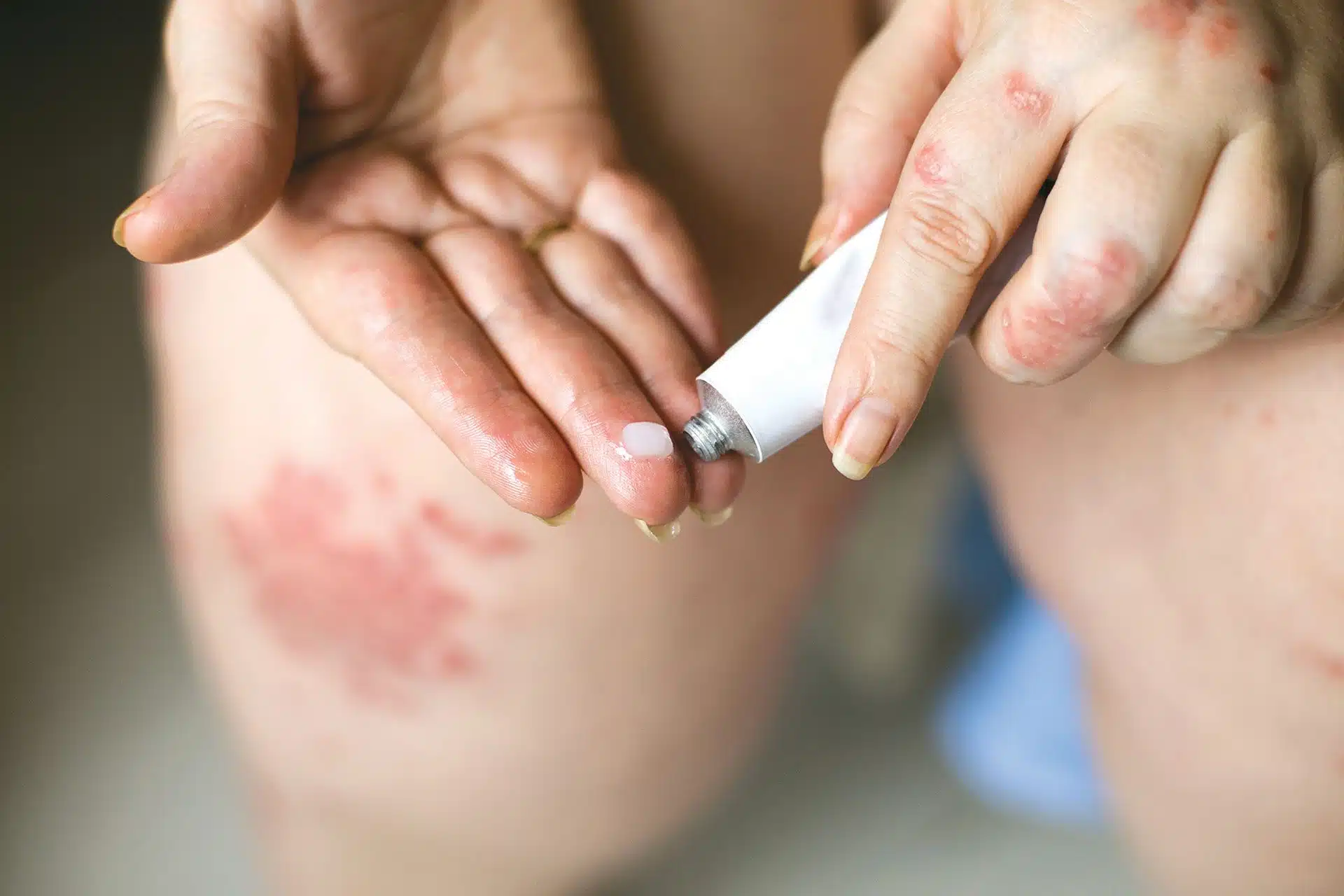CAMPAIGN UPDATE – May 2024
Our campaign for better labelling of steroid creams and ointments has been successful! National Eczema Society is delighted the UK medicines regulator, the MHRA announced in May 2024 that potency (strength) labelling will be introduced. The new labelling will be added to topical steroid packaging over the coming year. It will show whether the topical steroid is mild, moderate, strong or very strong.
This labelling change is important to help our community use these widely-prescribed medicines safely and effectively. Topical steroids are used by millions of children and adults in the UK to manage eczema flare-ups. We are very grateful to all the patients, healthcare professionals and organisations who supported this important campaign. We also applaud the MHRA for implementing.
May 2023
Leading professional dermatology organisations and other charities have joined National Eczema Society in calling for clear potency (strength) labelling of steroid creams and ointments. We are asking the UK medicines regulator, the MHRA, to ensure pharmaceutical manufacturers include consistent and clear potency labelling on topical steroid (TCS) tubes, packaging and patient information leaflets. Here is the full letter submitted to the MHRA.
Topical steroids are used by millions of adults and children in the UK to treat or prevent eczema flare-ups. It is important patients and their carers have the right information to use these medicines safely and effectively to manage eczema well. Topical steroids are effective treatments for eczema but, like many treatments, they can have side effects. People with eczema and carers are understandably concerned about overusing TCS. We believe clear potency labelling will help improve patient understanding and confidence in these widely-used medicines.
Steroid creams and ointments come in four levels of potency: mild, moderate, potent and very potent. When deciding on topical steroid potency, healthcare professionals take into account factors including eczema severity, the age of the person, and the area of the body where the eczema needs treating. People are sometimes prescribed different potency TCS to use on different areas of the body. Over time, patients can amass a number of different topical steroids medicines, with no meaningful information shown on the tube or packaging about their potency or equivalence.
The situation is made more confusing with the various types and many product names of topical steroid creams and ointments. The product packaging shows the percentage of active ingredient, but it’s difficult working out what this means in terms of the steroid strength. For example, 1.0% hydrocortisone is a mild topical steroid, whereas 0.1% betamethasone valerate is potent. There can be a six hundred-fold difference between mild and very potent topical steroids. Patient information leaflets that come with products rarely state the TCS potency level.
At the moment, the system relies too much on healthcare professionals explaining about potency, but there is not always time for this during busy consultations. It also relies on patients understanding and remembering what is said in consultations. We can – and must – do better.
We need standardised labelling, so that patients and healthcare professionals become familiar with the way that potency is shown across all the many different topical steroid products and brands. The labelling scheme must be independent of language and literacy level, to be inclusive and effective. The goal is to achieve a level of patient understanding comparable to sunscreen strength using the Sun Protection Factor (SPF) labelling, which enables people to use sunscreens confidently and effectively.
This call for clearer labelling has strong support from the eczema community. National Eczema Society conducted an online survey in January this year, to find out more about people’s knowledge and understanding of steroid potency. We received 943 responses, from both adults with eczema and parents of children with eczema, and many thanks to everyone in the eczema community who took part.
Almost all respondents, some 98%, knew that TCS comes in different potences (strengths). However, almost half said they did not know how many different strengths there were, and only 17% correctly answered ‘4’. Most people (70% of respondents) said they would look at information printed on the tube or product packaging to find out about potency. It seems a glaring omission that potency information is not routinely provided at the moment. Some 95% of respondents said they would like to see clear strength labelling on all steroid creams and ointments. See here for the full survey results.
A report on the findings from this survey, and a further survey conducted in March investigating awareness of specific topical steroid products, has been published in the Clinical and Experimental Dermatology Journal – see here. The research highlights a worrying lack of understanding of steroid potency among patients. 1 in 5 respondents underestimated the potency of their topical steroid and almost a quarter overestimated this. Many people used the survey to express their concerns with topcial steroids.
This initiative for clearer labelling has strong support from healthcare professionals and other charities, with the following organisations endorsing the National Eczema Society’s campaign:
- British Association of Dermatologists
- British Dermatological Nursing Group
- British Society for Paediatric and Adolescent Dermatology
- British Society for Allergy & Clinical Immunology
- Dermatology Council for England
- Eczema Outreach Support
- Primary Care Dermatology Society
- Scottish Dermatological Society
Please see our webpage and other information for more about topical steroid treatments for eczema.

